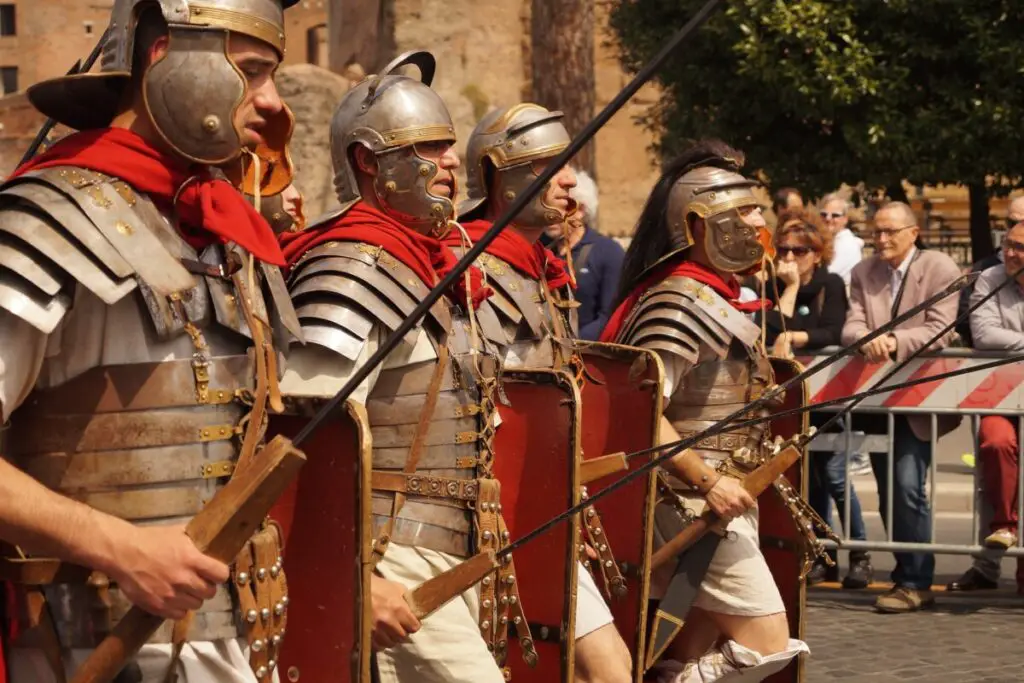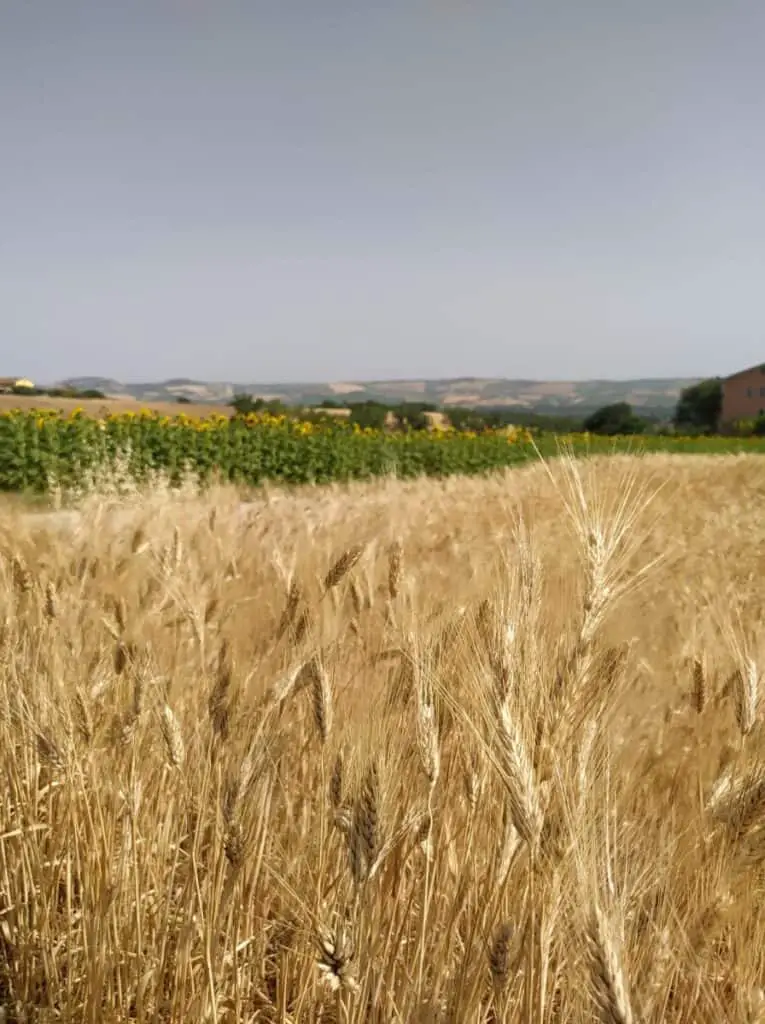If you are interested in the Italian language, you might know that Italian is spoken in several different accents depending on the area. You may have wondered what is the best Italian accent?
For example, some Italian accents may sound to you more musical than others, some accents may have more closed or open vowels, some accents may have a more aggressive or kinder tone, some might sound more or less posh.
So I decided to write a helpful post where I answer this question, as well as explain where the differences between accents come from and why Italy has so many different accents.
Keep reading to find out more!
Which Italian accent is the best?
According to a survey of 2000 Italians, the majority (18%) of people find the Tuscan dialect more pleasant or seductive and 15% prefer the Emilia Romagna dialect, followed by the Roman dialect (13%) and the dialect spoken in Salento (12%).
The Italian poet Dante Alighieri wrote his Divine Comedy in the “dialetto fiorentino”, the dialect spoken in Florence, Tuscany, where he was from.
Dante pushed to make the Tuscan dialect a standard Italian, spoken by people in all regions, so it’s interesting that the majority of Italians in this survey found the Tuscan dialect to be the most pleasant.
The majority of Italians seem to prefer the Tuscan dialect. This is also the dialect that Dante Alighieri argued should be spoken by all Italians.
The perceptions of different Italian accents by Italians can be a sensitive topic, and can sometimes stir up disagreements.
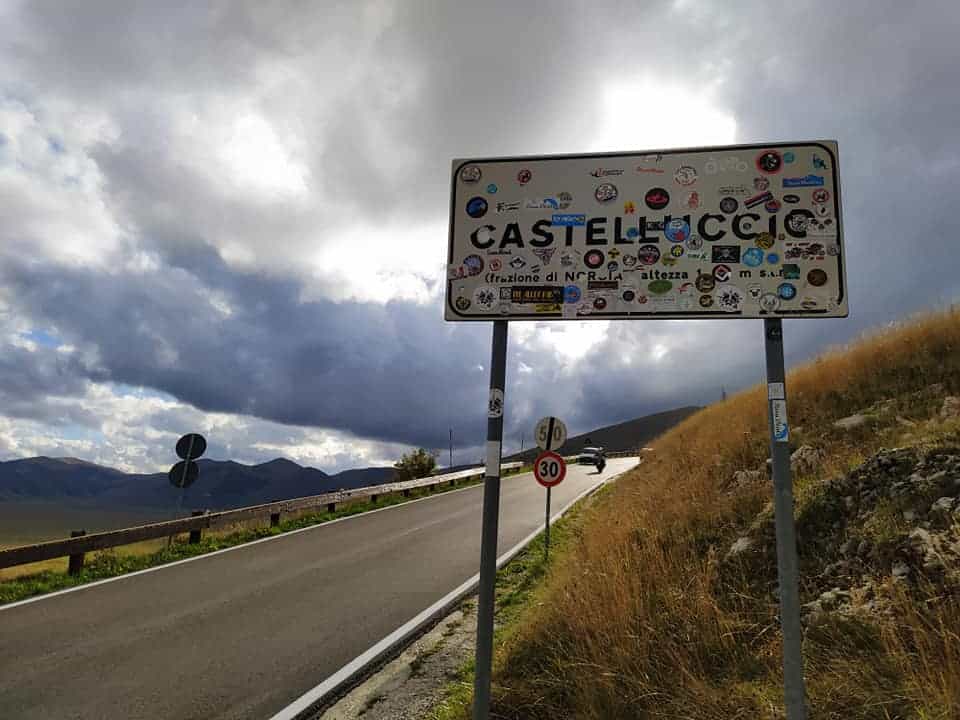
It is important to realize that all Italian accents are beautiful and unique, and there isn’t one accent that is better than another.
If you are interested in the Italian language and culture, it may be useful for you to know how different Italian accents are stereotypically perceived, and how they sound to Italians.
Below are some of the things that I have heard Italians say about accents in various areas of Italy:
- I have heard people in southern and central Italy say that some northern accents sound posh, petulant or moany
- I have heard people in northern and central Italy say that southern Italian accents sound rude, vulgar and sometimes aggressive
- I have heard people say that accents in central Italy are countryside, or rural, accents
What is the difference between an accent and a dialect?
Before we carry on, it is important that we clarify the difference between accent and dialect, since they can sometimes be mixed up.
An accent is the way that a language is pronounced. It includes features such as where the stress falls in speech, and whether certain vowels are pronounced with an open or closed sound.
A dialect is the way that a language is pronounced, but also includes deeper differences in grammar and vocabulary.
An accent is how a word is pronounced, and is one of the features of a dialect
For example, a person from Rome might speak in standard Italian, with none of the changes to words which are typical of the Roman dialect, but the way that they pronounce their vowels and the intonation of their speech may still be very clearly Roman.
Accent and dialect are different, but many people use these two terms interchangeably, because an accent is part of a dialect, and so the two are difficult to separate.
For the purpose of this article, I will sometimes use these two terms interchangeably.
Are there different Italian accents?
The Italian language is known for its many different types of accents. The sound of spoken Italian changes throughout Italy depending on which region you are in or, sometimes, which town.
Some Italian words can sometimes change entirely from one dialect to another. You can use this search tool to find words in standard Italian and their translation into the different Italian dialects.
For example, the word “boy” or “young man”, which is “ragazzo” in standard Italian, changes substantially from one dialect to another.
These are just a few examples:
- Sicilian – picciotto
- Neapolitan – guaglione
- Marche – frico/ vardascio
- Emilia Romagna – ragas
- Piemonte – cit
- Sardegna – pizzinnu
Here is a map of the different Italian regions, and the word “ragazzo” in each of the regional dialects:
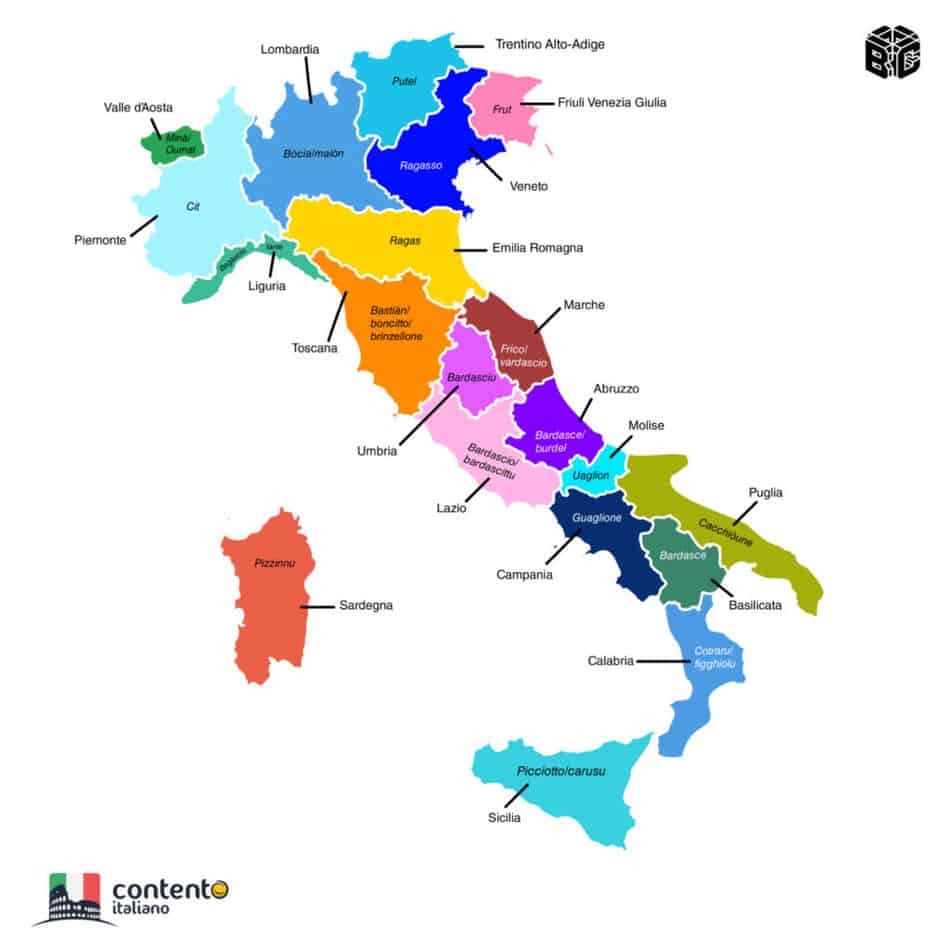
Just how much the sound of spoken Italian changes from region to region depends on the person you are speaking to. Someone might speak with a very strong local accent or have a barely detectable accent.
What Italians have said about some of the Italian accents and how they sound
I have done some research on discussion forums to see what Italians think about the different Italian accents, and which they prefer.
Here is what they said:
- Piemontese
People likened the Piemontese dialect to French. Someone added that the Piemontese dialect makes the speaker sound drunk and evokes in them thoughts of the mountains and vineyards.
I agree that speech in the Piemontese accent can sound slurred at times.
Some vowels are missed out at the end of words, which overall makes Piemontese sound less musical and less flowy than standard Italian because there are fewer vowels.
The “e” in the Piemonte dialect sound more open than standard Italian and the “o” sounds more closed than standard Italian.
For more on the musicality of Italian, you may be interested in my other article “Does Latin Sound Like Italian?“.
Here is a video recorded in the Piemonte accent.
- Venetian
A number of people, when asked which Italian accent they prefer, said that they preferred Venetian because of its musicality.
In the Venetian accent the voice goes up and down more than in standard Italian, making the speech sound musical.
Here is a video recorded in the Venetian accent.
- Tuscan
The Tuscan accent can sound breathy, because consonants like “c” and “t” are pronounced as “h”. Speech in the Tuscan accent can sound a little lazy because of these changes to pronunciation.
Some people considered the Tuscans’ way of pronouncing the letter “c” annoying, although I read about one person who finds it very appealing.
It is very much down to personal taste whether you like the Tuscan dialect or not.
- Emilia Romagna accent (also called “Romagnolo”)
During my life in Italy I heard some people say that the Emilia Romagna accent sounds moany.
I believe that this is due to its cadence, where the intonation goes up more than in other dialects and the fact that the “e” vowel is pronounced as a more open “e” than in more southern regions.
The cadence of the Emilia Romagna accent, however, can also make it sound musical.
Here is a video recorded in the Emilia Romagna accent.
- Marche, Umbria and Abruzzo
I spent most of my childhood and teen years in the Marche region. Italians consider the Marche, Umbria and Abruzzo accents to be countryside and down-to-earth accents.
This makes sense, since agriculture and farming are traditionally very strong sectors in these regions of central Italy.

If you are interested in hearing what the Marche accents sound like, listen to the Italian actor from Marche, Neri Marcorè go through all the different Marche accents.
It’s interesting how different versions of an accent may be spoken in different locations of the same region and dialects closer to the borders take on features of the accents from neighbouring regions.
For example, the actor explains how the accent in northern Marche sounds more similar to the neighbouring regions of Emilia Romagna and San Marino and the accent in southern Marche sounds more similar to the Abruzzo dialect.
- Roman
The Roman accent has been defined as dramatic, expressive, funny, suitable for comedy and sometimes rude, alongside the Neapolitan accent. Someone also defined the Roman accent as over the top and lacking in elegance.
When you listen to the Roman accent, you will hear more vowels than in standard Italian. This is because:
- The Roman accent often merges the end of one word with the beginning of the next word. For example “vedere la casa” (“to see the house”) may sound like “vedè aa casa”
- The Roman accent often takes out consonants and fills the gap in with vowels. For example “quella” (“that one”) sounds like “quaa”.

The cadence of the Roman accent, where certain words get punctuated and emphasised within a phrase, makes the Roman accent sound emphatic. People who speak with a strong Roman accent can also sound shouty at times.
If you wish to listen to the Roman accent, you can watch this extract from a popular Italian comedy film from the 1980s. There is also a useful transcript of this scene available. If you know the Italian language, the transcript will help you to spot the differences between the Roman accent and standard Italian.
- Neapolitan
The Neapolitan accent has been defined as dramatic, expressive, funny, suitable for comedy and rude, alongside the Roman dialect.
One person from Naples said that they speak standard Italian all the time, but use the Neapolitan accent when they want to emphasise that they feel strongly about something, or when they want to reinforce a concept.
- Sicilian
The Sicilian accent has been described as angry and defiant.
The Sicilian accent has traditionally been considered as the accent spoken by the Mafia. This association between the Sicilian tone and cadence and ideas of angry and defiant has been reinforced over time by several films and TV shows, both serious and comical.
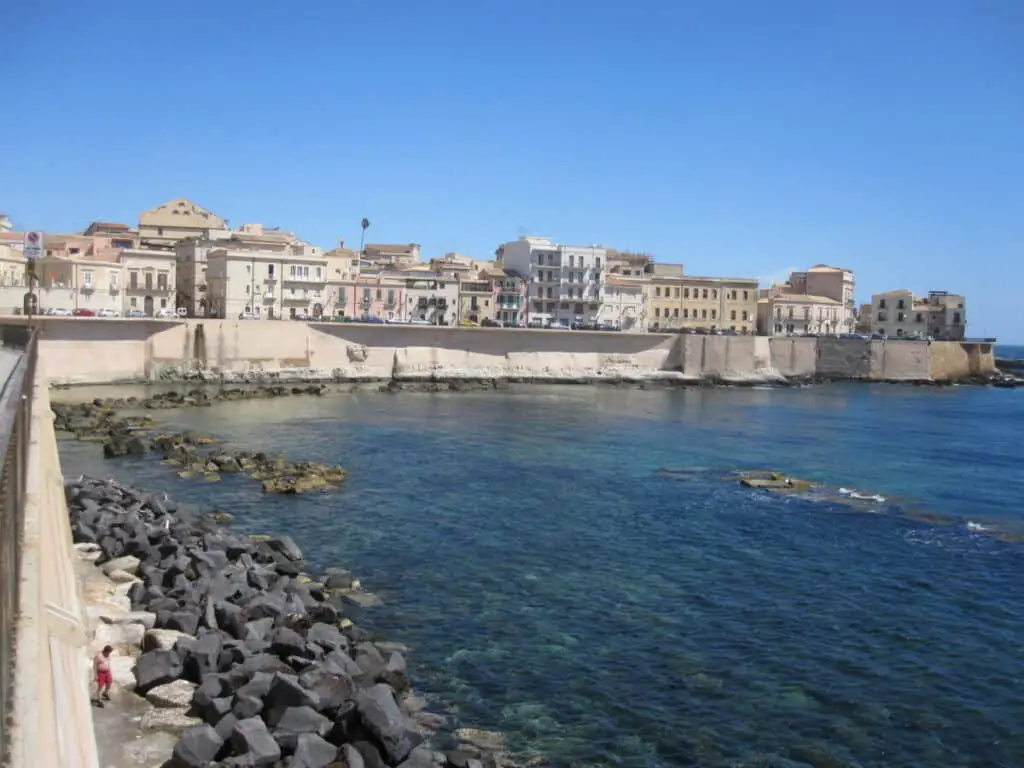
If you wish to listen to the Sicilian accent, you might be interested in watching the Italian TV series Inspector Montalbano, which has been shown on BBC and is subtitled in English.
Inspector Montalbano contains both standard Italian spoken with a Sicilian accent and strong Sicilian dialect, which some of the characters speak.
Listen to a parody of the Italian accents by an Italian comedian
Italian comedian Enrico Brignano did a great parody of all the Italian accents, from north to south.
This can be useful to understand how Italian accents are perceived by Italians, and how each accent is linked to certain regional characteristics.
A strong Italian accent can be difficult to understand. I myself, as a native speaker, do miss parts of what is being said in this video.
What are the main features of each Italian accent? Let’s look at each Italian region in turn
- Valle d’ Aosta
The Valle d’ Aosta dialect (also called Patoué) is considered a language and just over half the population of Valle d’ Aosta speaks it as a native or second language.
Patoué has very strong influences from a dialect spoken in east-central France.
- Piemonte
The Piemonte dialect, also called Piedmontese, is also considered by some a language in its own right.
Here are some differences between standard Italian and Piedmontese:
vado > i von
gli dico > i-j diso
braccio (arm) > brass
Casa > meison (note the French influence)
- Liguria
The Liguria dialect, also called “Genovese”, from Genova, originates from the Latin that was spoken in the northern part of Italy, in an area which, at the time was called Cisalpine Gaul.
The Liguria dialect sounds similar to that of the neighbouring regions of Lombardia, Piemonte and Emilia Romagna.
Here are some differences between standard Italian and the Liguria dialect:
pera > peia
lampone > framboasa
cuore > cheu
chiudere > serrâ
Here is a video recorded in the Liguria dialect.
- Lombardia
The Lombardia dialect sounds like Catalan and Portuguese
Here is a video recorded in the Lombardia dialect.
- Trentino Alto-Adige
The Trentino Alto-Adige dialect is influenced both by the Ladin language, spoken in the Dolomite Mountains and Northern Italy, and by German.
Here is a video recorded in the Trentino dialect.
The Trentino dialect, similar to the Veneto dialect, sounds musical and poetic. This is possibly because some of the word endings are missed out, which makes the spoken language sound flowy.
Here are some differences between standard Italian and the Trentino Alto-Adige accent:
- Mi chiamo (“I’m called” in standard Italian) is pronounced as “Mi tchamo”
- Vowels at the end of words can be missed out. For example “bene” becomes “ben” and “fare” becomes “far”
- È (he is) becomes “L’è”. The addition of the “l” makes it easier to pronounce this verb, so the language sounds more flowy
- Friuli Venezia-Giulia
The Friuli Venezia-Giulia dialect derives from Ladin, like the Trentino accent.
Here is a video recorded in the Friuli dialect.
The Friuli accent has similar features to the Trentino dialect, such as missing out the end vowel in some words. Speech in the Friuli accent sounds musical and flowy.
Here are some differences between standard Italian and the Friuli accent. Note the similarities with the Trentino accent:
- “Peccato” (“shame/ pity” in standard Italian) is pronounced “pechato”
- “Serrato” (“tight” in standard Italian) is pronounced “sierrat”
- “Genitori” (“parents” in standard Italian) becomes “genitor”
- Veneto
The Veneto dialect is understood, and sometimes spoken, in the nearby regions Trentino and Friuli.
The Venetian accent is known for being very musical. When you listen to the spoken Venetian accent, you will probably agree.
Here are some key elements of spoken Venetian:
- The “z”, normally a hard “tz” in standard Italian, is pronounced as “s” in the Venetian accent. This makes spoken Venetian sound softer than standard Italian.
- In the Venetian accent, vowels at the end of words are sometimes missed out. For example, the word “invasione” is pronounced “invasiòn” and the word “situazione” is pronounced “situasiòn”. This makes spoken Venetian sound song-like, poetic and graceful.
- There is less stumbling in pronouncing spoken Venetian, compared to standard Italian. For example, try pronouncing “si sono trasferiti” (they moved) in standard Italian and “se trasferia” in Venetian. Which one is easier to pronounce? Or try “vengono” (they arrive in standard Italian) and “vièn”, in Venetian. Which flows more easily?
- Venetian puts in extra consonants which make the language flow better and easier to pronounce. Try pronouncing “Che è” (“which is”) in standard Italian and “che s’è” in Venetian. Which flows more easily?
Some individual words differ between standard Italian and the Veneto accent. Words in the Veneto accent sound more musical than in standard Italian.
- The word “apricot” is “albicocca” in standard Italian and armelín in Venetian
- The verb “to throw” is “tirare” in standard Italian and trar via in Venetian
- Emilia Romagna
The Emilia Romagna dialect belongs in the same family of Gallo-Italic languages together with the Piemonte, Liguria and Lombardia accents, so people speaking accents from these regions understand each other.
A peculiar feature of the Emilia Romagna accent is that sometimes it uses the article “the” in front of names of people and pets (proper nouns).
For example, a lady called Laura would be referred to as “La Laura” which translates as (“the Laura”). This use of definite articles in front of proper nouns can sound a little strange to Italians who are not from Emilia Romagna.
Here are some of the differences in words between standard Italian and the Emilia Romagna accent.
- The word “lungo” (“long” in standard Italian) is pronounced “longh” in the Emilia Romagna accent
- The word “allora” (“so” in standard Italian) is pronounced “aloura” in the Emiglia Romagna accent
- The word “Febbraio” (“February” in standard Italian) is pronounced “Fervêr” in the Emilia Romagna accent
- Toscana
Probably the most well-known feature of the Tuscan accent is that the letter “c”, mostly pronounced as a hard “k” in standard Italian, is pronounced as an “h”. For example, “la casa”, which is pronounced as “la kasa” in standard Italian, is pronounced as “la hasa” in Tuscan.
This also happens with the sound “t” which the Tuscans pronounce as “th”.
Other interesting features of the Tuscan accent are:
- Faccio una torta (“I make a cake” in standard Italian) is “Fo una torta” in Tuscan
- Vado a casa (“I go home” in standard Italian) is “Vo a casa” in Tuscan
- Tu come ti chiami? (“what is your name?” in standard Italian) is “Te, come ti chiami?” in Tuscan
- Dobbiamo andare al lavoro (“we have to go to work” in standard Italian) is “Dobbiamo andà al lavoro” in Tuscan
- Umbria
The Umbria dialect is classed as a central Italian dialect and so some of its features are similar to the accents of the neighbouring Marche and Lazio regions.
You can hear the similarity between Umbria, Marche and Lazio accents in this interview ran by the local Umbrian news in the city of Terni.
- Marche
The Marche dialect is also classed, together with Umbria, as a central Italian accent.
Here are some typical features of the accent of Marche (also called “Marchigiano”):
- The last syllable of some words sometimes gets chopped off and is stressed. For example, the word “piccione” (“pigeon” in standard Italian) becomes “picciò” or the word “contadino” (“farmer” in standard Italian) becomes “contadì”.
- Verbs in the infinitive can lose the last syllable and become stressed. For example “Andare a mangiare” (“to go and eat”) becomes “Andare a magnà”.
- The “ng” found in many Italian words such as “mangiamo” (“let’s eat”) can sometimes get inverted to “gn”, “magnamo”
- Lazio
The Lazio accent is also referred to as Romanesco accent (from Rome).
Here are some of the features of the Romanesco accent:
- The letter “l” can become “r”. For example “soldi” (money) is pronounced “sordi”
- The letters “b” and “g” can be doubled up sometimes. For example “libro” (book) is pronounced “libbro”
- Abruzzo
The Abruzzo accent is also classed as a central Italian accent.
The Abruzzo accent, especially in the southern part, sounds very similar to Neapolitan. In fact, historically, Abruzzo was part of the Kingdom of Naples.
Listen to this video spoken in the Abruzzo accent to hear the similarities with the Campania accent.
- Molise
The Molise region was also part of the Kindom of Naples for several centuries, so the Molisan accent bears strong similarities with the accent of Campania (and Naples, more specifically).
Here are some differences in vocabulary between the Molise accent and standard Italian:
- The word “fuoco” (fire) is “fuéche” in Molisan
- The word “uovo” (egg) is “uéve” in Molisan
- The letter “c” can be pronounced as a “g”. For example the word “ancora” (still) is pronounced as “angora” in Molisan.
- Campania
The dialect of Campania is also referred to as Neapolitan dialect, since it originates in Naples and its surroundings.
Listen to this video spoken in the Neapolitan accent. You may hear the similarity in cadence with the Abruzzo and Molise accents.
Here are the main features of the Neapolitan accent:
- The letter group “nd” becomes “nn” in Neapolitan such as “mondo” (“world” in standard Italian) changing to “munnu” in Neapolitan or “quando” (“when” in standard Italian) changing to “quanno” in Neapolitan.
- Sometimes definite articles (the English “the”) are shortened in Neapolitan. For example “Il ragazzo” (“the boy” in standard Italian) is “‘o guaglione” in Neapolitan and “la ragazza” (“the girl” in standard Italian) is “‘a guagliona” in Neapolitan.
- Sometimes indefinite articles (the English “a”) are changed in Neapolitan. For example “una volta” (“once” in standard Italian) is “‘na volta” in Neapolitan.
- Differences in the verb conjugations. Consider the phrase “Sono stato a Napoli ieri” (I went to Naples yesterday) in standard Italian, which changes to “Aggio stato a Nnapule ajere” in Neapolitan.
A lot of Italian popular music and theatrical performance is in the Neapolitan accent.
- Puglia
The accent of Puglia is a mixture of Neapolitan and other accents which are specific to the largest cities in Puglia, such as the Bari accent, the Foggia dialect and the Taranto accent.

Listen to the Puglia dialect in this video, where the people interviewed talk about food eaten in the Christmas celebrations.
- Basilicata
The Basilicata dialect is also referred to as Lucanian dialect. The Basilicata dialect is considered a form of Neapolitan.
You can listen to the Neapolitan accent spoken in Basilicata in this video, which is a series of interviews by a local TV channel to a number of women from Basilicata for International Women’s day on 8th March.
- Calabria
People in northern Calabria speak the Neapolitan accent while the accent in southern Calabria is closer to Sicilian.
This blend of the Neapolitan and Sicilian accents spoken in Calabria is referred to as Calabrese accent.
- Sicilia
The Sicilian dialect, considered a language in its own right, includes a number of other dialects spoken in various parts of Sicily.
The Sicilian vocabulary has been shaped by various influences over the centuries such as Greek, Germanic, Spanish, French and Arabic.
Below are a few examples of differences between standard Italian and Sicilian:
- The word “bella” (“beautiful” in standard Italian) is “bedda” in Sicilian
- The word “padre” (“father” in standard Italian) is “patri” in Sicilian
- For words that begin with the letter “i” the initial “i” is sometimes dropped in Sicilian. For example, “importante” (“important” in standard Italian is “mpurtanti” in Sicilian
- Verb conjugations can differ between standard Italian and Sicilian. For example, “sono” (“I am”) is “sugnu” in Sicilian.
If you are interested in listening to the Sicilian dialect, you can watch this video spoken by a Sicilian-American.
- Sardegna
The Sardinian dialect is also considered a language in its own right. Sardinian can sound quite different from standard Italian.
Look at how different these sentences are:
- “Prestami il tuo dizionario”, which is standard Italian for “lend me your dictionary” is “Imprestami su tou de ditzionariu” in Sardinian
- “Ho visto Maria”, which is standard Italian for “I’ve seen Mary” is “Apo bidu a Maria” in Sardinian
You can listen to the Sardinian dialect here.
Listen to all the different Italian accents
If you would like to get an overall idea and a quick comparison between Italian accents, the video below contains audio for each different one:
Why are Italian dialects so different? A history lesson
Up until 1861, Italy was divided into smaller states, each with their own ruling.
Prior to Italian unification, the different states, to an extent, had different histories and spoke different versions of the Italian language.
Below are just a few of the interactions that Italy had with other cultures and countries that shaped the local Italian accents over the centuries:
- Northern Italy had interactions with Switzerland, Austria, France and Germany
- Sicily had interactions with the Greek, French, Arabic, German and Spanish cultures
- The area of Venice, and the northern Adriatic coast had interactions with Dalmatia, Croatia, Istria and Albania and with the Greek and Arabic cultures.
This is why the various Italian dialects are so different from each other.
You can find out more about the encounters that Italy had with other cultures in my article Ten Reasons That Make Italy Special.

The local Italian accents reflect the different history and influences on each region over time
Photo by Ilaria Bertini
Just after Italian unification, people from different Italian regions were like people from different countries,
As an example of this, consider the story below.
Just after the Italian unification, the Italian Army, called Esercito Sabbaudo, came into existence. Soldiers enrolled into the army from all the different parts of Italy.
Soldiers who came from the south of Italy could not understand the orders of their northern Italian superiors. The superiors devised two new words, understood to all, to indicate the directions “left” and “right”: the word “pasta” (pasta) was used for “destra” (right) and the word “fagioli” (beans) was used for “sinistra” (left).
Do different Italian accents understand each other?
You may have wondered if Italians speaking different Italian accents can understand each other.
Local Italian accents, particularly those of areas far away from each other, can be very different. If two people from different areas, say someone from Venice and someone from Puglia, were speaking a tight local accent, they would struggle to understand each other.

Italian unity in 1861 brought along a national Italian, which is a concept similar to Received Pronunciation as a British English accent.
This national Italian accent is the standard Italian that is taught in school and spoken by the majority of the population. If two people from far-apart Italian regions spoke in standard Italian to each other, they would understand with no problem.
Even as a native Italian speaker, I struggle to understand the vast majority of Italian accents, if the speaker has a very strong accent.
Are there similarities between dialects spoken in adjacent areas today?
As we saw earlier in this article, the Italian accents of adjacent areas are similar to each other.
For example, the northern Marche accent is similar to the Emilia Romagna and San Marino accent, or the southern Calabria accent, despite being called “Calabrese”, is so close to Sicilian that some people refer to it as Sicilian.
In general, the northern Italian accents are closer to each other than they are to other accents because, historically, they underwent similar influences. The same applies to central Italian and southern Italian accents.
As an example, my grandma, who can understand a lot of the Sicilian accent, could understand what was being said when she visited Calabria, and her knowledge of Sicilian also facilitates her understanding of the Neapolitan accent.
How different are the Italian dialects from the standard Italian?
When Italy was unified, the national Italian, which actually comes from the Tuscan dialect, came into use across the whole nation.
The rise of the national Italian meant that local dialects were no longer spoken as much as before. This coincided with compulsory education coming into existence across the country as a rule in the new unified Italy.
Within school, use of the national Italian was encouraged over use of the local dialects. This is still the case today.
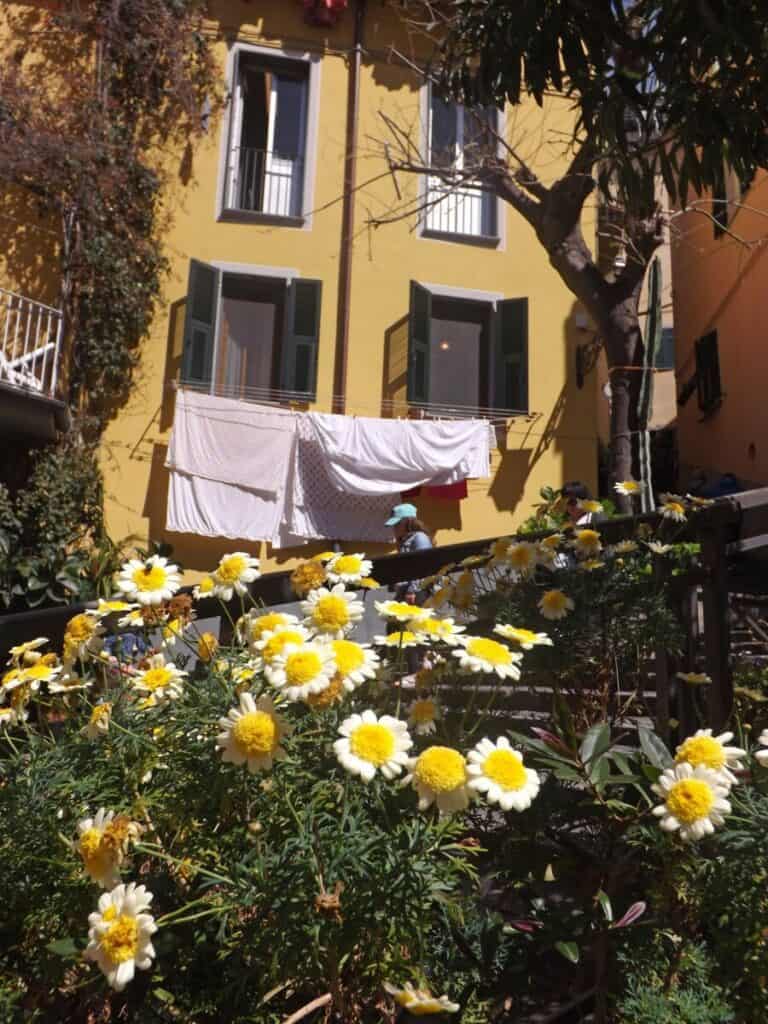
When Italy was unified, the national, standard Italian came into use across the whole nation.
Photo by Ilaria Bertini
How commonly are Italian dialects spoken today?
It is common for the majority of Italians today to still speak their local accent, or at least have a regional cadence to their speech. However, the vast majority of Italians who are educated to at least Primary School level can speak and understand both their local dialect and standard Italian.
Italians may speak a very tight version of their local accent, or a more watered-down form. For example, they may have a regional cadence but not use any of the word and grammar modifications typical of their dialect.
Italian schools and workplaces encourage students and employees to use standard Italian for communication. So how much of their local accent people speak depends on many factors such as geographical area, level of education, type of employment and how much they travel.

How much of their local accent people speak depends on many factors such as geographical area, level of education, type of employment and how much they travel.
Photo by Ilaria Bertini
Consider that Italy has been united for a relatively small period of time. This explains why the Italian local accents are still so different and pervasive.
Italian linguists see the value of the local accents and are working hard to preserve them and prevent them from being lost. This work is carried out by a long-standing academy of Italian linguists called Accademia della Crusca.
I am learning Italian: should I speak in standard Italian or in an Italian accent?
If you are learning the Italian language, I would advise learning standard Italian cadence, words and grammar, although awareness of the different accents, and knowledge that words can change from one accent to another, will help your understanding of the language.
A regional accent, or a regional cadence, is something that you will pick up naturally by either living in Italy, or interacting with Italians from a certain region.
Conclusion: so what is the best Italian accent?
In this article I have discussed opinions and stereotypes attached to each of the Italian accents to help you understand how they are perceived by Italians.
It is very difficult to provide a standard answer to which Italian accent is the best, as this is down to personal preference.
It is important to remember that each Italian accent has its own uniqueness and musicality, apart from the stereotypical judgements that have been made about them over time.
Recommended
-
Navigating Italian Grammar: When and Why to Use the Infinitive

Are you an intermediate Italian learner who’s grappling with when to use the infinitive form of Italian verbs? Understanding Italian grammar can be tricky, especially when it comes to conjugating verbs. If you find yourself puzzled by when and why to use -ere, -are, and -ire endings, you’re not alone. In this blog post, we’ll…
-
Navigating Past Tenses in Italian: When to Use Imperfetto and Passato Prossimo

Are you struggling with choosing between passato prossimo and imperfetto in Italian? Don’t worry. You’re not alone. It can be frustrating to navigate these two past tenses, especially if your native language doesn’t make a clear distinction. Let’s shed some light on this topic. When you learn Italian, understanding the difference between passato prossimo and…
-
13 Common Italian Characteristics
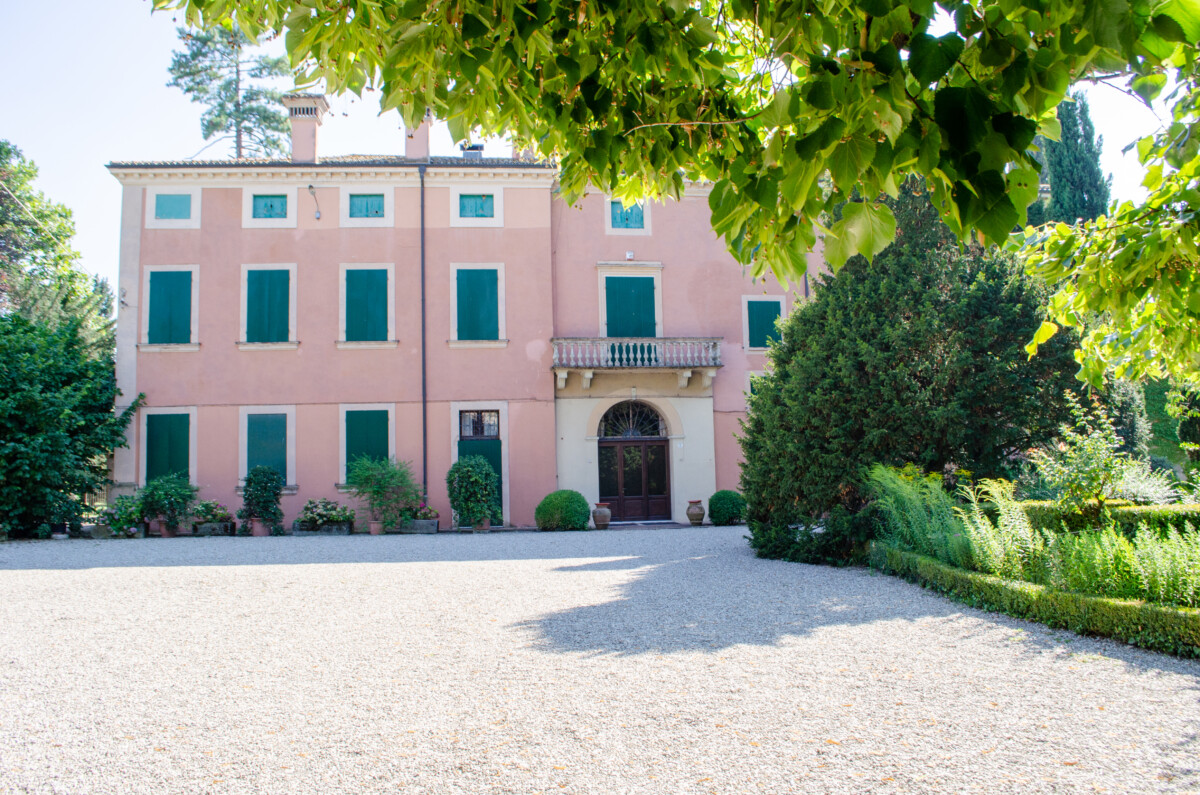
Are there specific traits that you noticed about Italians while you were on holiday in Italy or by spending time with an Italian friend? In this article, I put together the thirteen most common Italian characteristics. Read on to find out more. 1. Italians gesticulate a lot Italians find it hard to avoid using their…



